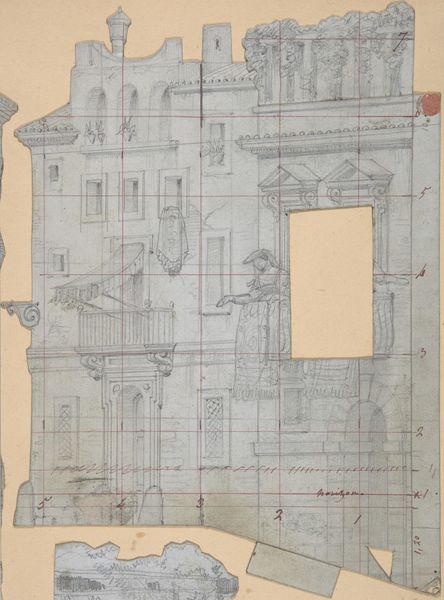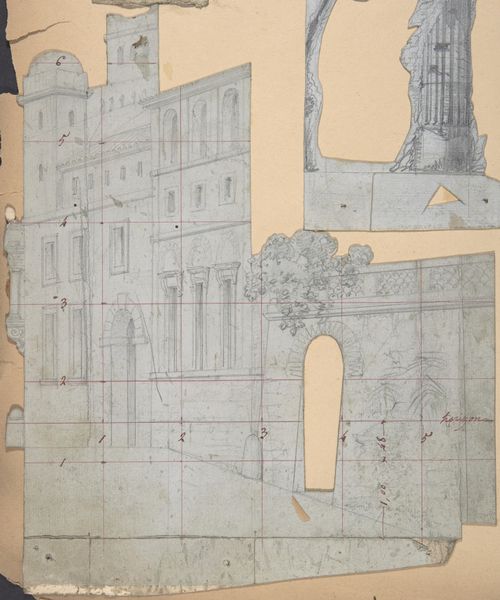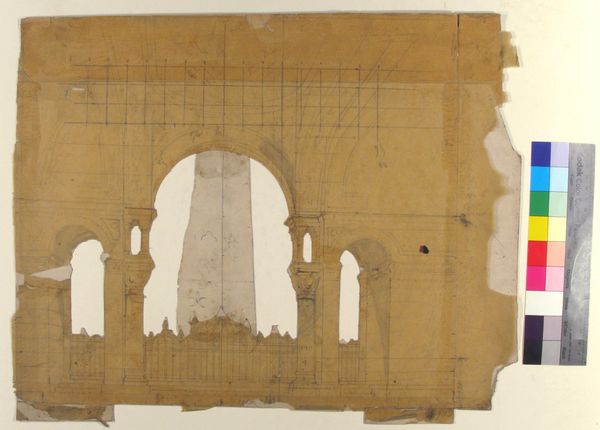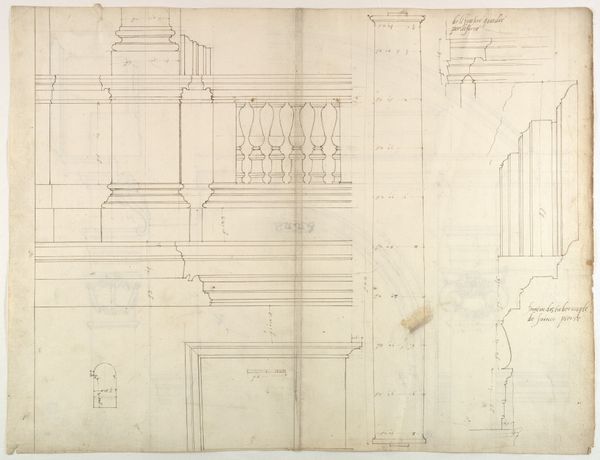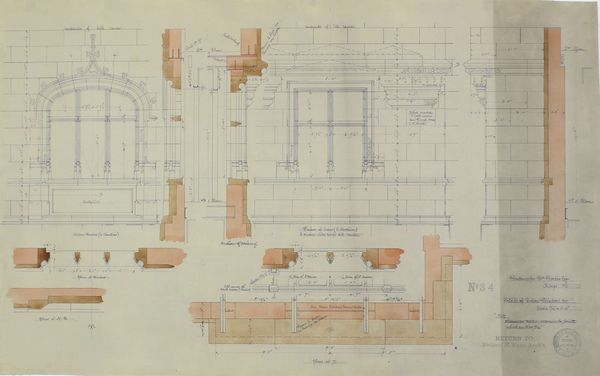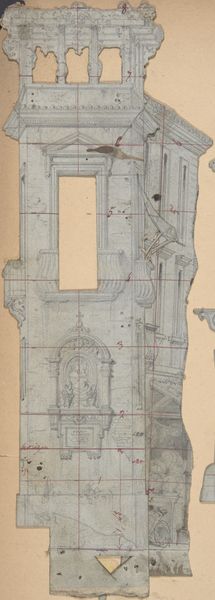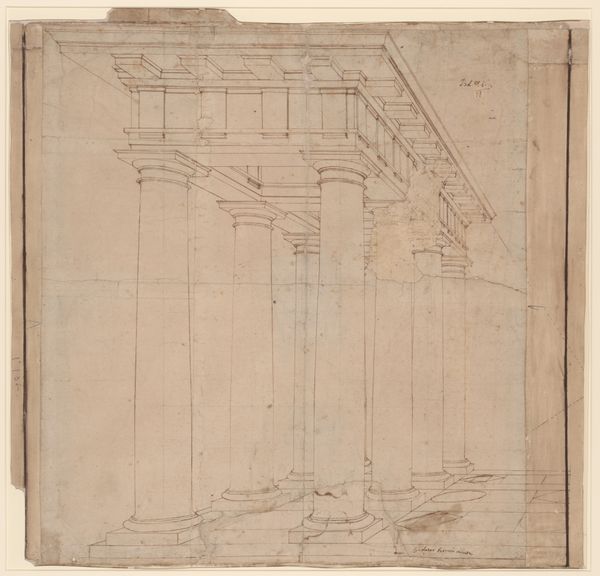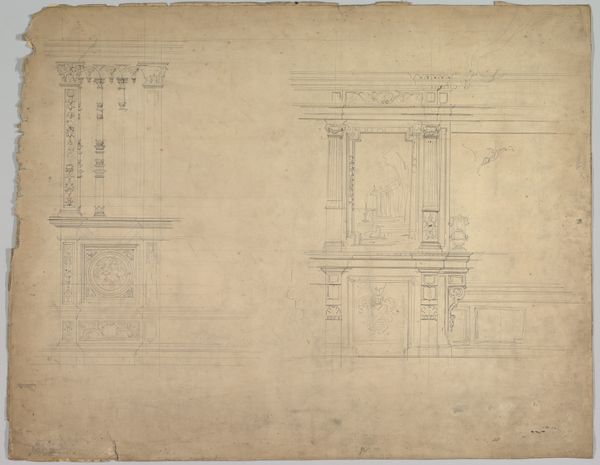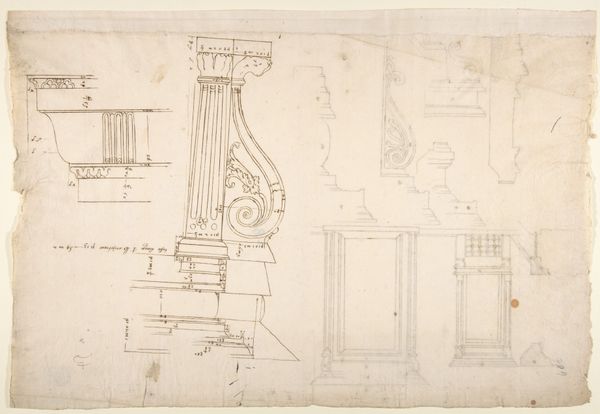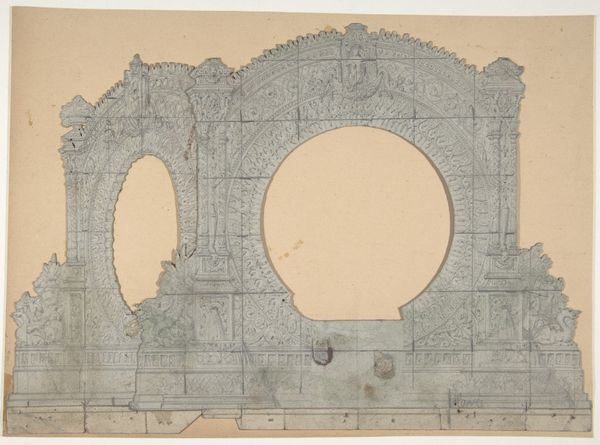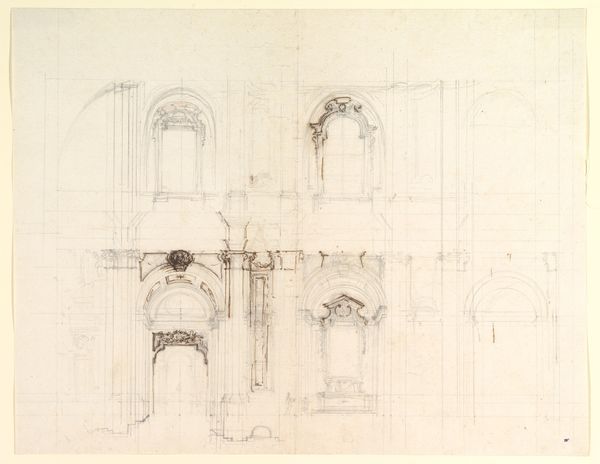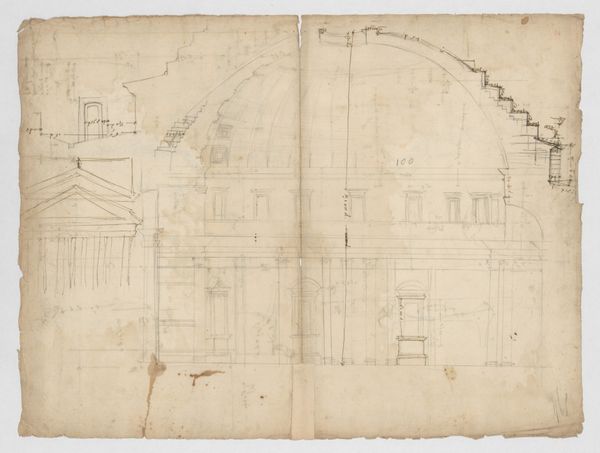
Design for a Stage Set at the Opéra, Paris 1830 - 1890
0:00
0:00
drawing, print, paper, pencil
#
drawing
#
neoclacissism
# print
#
paper
#
pencil
#
cityscape
#
watercolor
Dimensions: Irregular sheet: 9 3/4 x 8 1/16 in. (24.8 x 20.4 cm)
Copyright: Public Domain
Curator: This is Eugène Cicéri's "Design for a Stage Set at the Opéra, Paris," created sometime between 1830 and 1890. He's working here with pencil, watercolor, and print on paper. Editor: Wow, it has that ethereal, half-remembered quality of a dream. I’m immediately transported to some grand, imagined opera house of my mind. The ghost of a performance hovers. Curator: Exactly! The neoclassical aesthetic, with its focus on symmetry and architectural grandeur, was meant to evoke the historical opulence the bourgeoisie aimed to represent. This piece would have involved quite a few hands, given its scale and purpose. Editor: It's amazing how Cicéri captures that ambition with just these fragile mediums. It feels temporary, but powerful, as all theatre is. I wonder, did he envision specific scenes or stories unfolding in this space? Curator: Likely, yes. The design's purpose was highly functional. It speaks to the elaborate social spectacle of Parisian opera; a means for social classes to meet, show wealth and appreciate music. The gridlines show the calculation of scale – a factory for creating illusion! Editor: It's all smoke and mirrors, isn't it? Even in the bare bones of this stage design, you feel the anticipation of an audience and that slightly frantic energy backstage. Curator: Indeed. And even as a study, its very materiality reflects the socio-economic priorities. Cheap paper and the relatively accessible print medium makes artistic skills ever so slightly accessible to the wider population. But the subject matter? Ever out of reach for those it tries to impress. Editor: The whole thing feels wonderfully bittersweet, like looking at a faded photograph. A blueprint for something grand, viewed from the quiet remove of time. Curator: It reflects both high ambition and its material realization. A confluence of art, social history and even politics can be traced back to Cicéri’s design. Editor: It has this quiet energy that I really love – makes you think, doesn’t it?
Comments
No comments
Be the first to comment and join the conversation on the ultimate creative platform.
